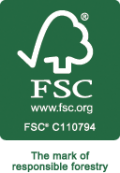A vibrantly colored, partially hand-printed book project by Richard Rose, Master Letterpress Printer at Jonathan Edwards College, is being featured this month at Artspace. His project, which combines letterpress (composing movable type and hand inking a printing press) and digital printing, was commissioned with funding from the National Endowment for the Arts.To the Letter: Reading New Haven is an intimate, accordion-fold book project that deftly encompasses the digital with the analog. Computer design, digital printing, photography and hand-set letterpress techniques were combined, creating a work using the vast collection of images of New Haven’s signage and street typography that Rose has gathered over the past 5 years. Richard calls his project “a kind of visual scavenger hunt and tour through the Elm City.”“As an artist and letterpress printer, I am keenly interested in forms of letters and their relation to meaning. Over the past five years I have been informally photographing signage and lettering in New Haven’s built environment. My aim has been to produce a kind of ‘lettered portrait of New Haven’ focusing on intrinsic graphic qualities,” said Rose.For this project Rose investigated the combination of letterpress with digital printing, a process that will reflect something of the historical and contemporary attributes one sees throughout New Haven.The book’s structure is a variant of the accordion or concertina fold. The accordion’s zigzag is one of the simplest book forms, and allows a book to be viewed either page-by-page or displayed in its entirety as a sculptural object.Yale Printing and Publishing Services assisted digitally printing Rose’s images from their large format Cannon iPF9400S printer on the interior pages, followed by the text printed letterpress on a Vandercook SP20 cylinder press. The mould made paper produced for the inner pages are meticulously crafted in small quantities by several European mills, and provide both excellent print and archival qualities. Following printing, the edition was assembled, and weighted in a book press. The finished book emerged – as, one hopes, what British designer Oliver Simon called “an inevitable whole.”
- Main Menu
- Sub Menu
- Order
-
Products & Services
Apps & Digital Publications
 YPPS develops customized apps for all mobile platforms. We will meet with you to determine your exact needs and develop your app from the ground up. Contact YPPS Customer Support for more information.
YPPS develops customized apps for all mobile platforms. We will meet with you to determine your exact needs and develop your app from the ground up. Contact YPPS Customer Support for more information. -
BluePrint Copier Rental
 The YPPS BluePrint Team manages the Copier Rental Program and the PaperCut Program, we customize our services based on your specific needs.
The YPPS BluePrint Team manages the Copier Rental Program and the PaperCut Program, we customize our services based on your specific needs. -
Promotional Solutions
Promotional Solutions from YPPS
 Over the last 25 years, YPPS has been able to procure and provide top quality custom specialty items and more to the Yale community. With a dedication to quality, turnaround, and cost, our Promotional Items & Solutions department has partnered with local Yale-approved vendors to produce all of our products. We take pride in knowing that we can facilitate these projects with great service and quality.
Over the last 25 years, YPPS has been able to procure and provide top quality custom specialty items and more to the Yale community. With a dedication to quality, turnaround, and cost, our Promotional Items & Solutions department has partnered with local Yale-approved vendors to produce all of our products. We take pride in knowing that we can facilitate these projects with great service and quality.Please use these web pages as a guide to better understand how we can help you with your promotional events and projects.
For options, specifications, and cost estimates, contact us by calling or emailing:
Edward Van Keuren @ 203-432-7076 edward.vankeuren@yale.edu
Carmen Cusmano @ 203-432-3540 carmen.cusmano@yale.edu -
Sustainability
YPPS: FSC Certified
 YPPS is now an FSC certified vendor. The Forest Stewardship Council™ (FSC) is an international not for-profit, multi-stakeholder organization established in 1993 to promote responsible management of the world’s forests. One of its main tools for achieving this is independent certification and labeling of forest products, which offers customers the ability to choose products from socially and environmentally responsible forestry.
YPPS is now an FSC certified vendor. The Forest Stewardship Council™ (FSC) is an international not for-profit, multi-stakeholder organization established in 1993 to promote responsible management of the world’s forests. One of its main tools for achieving this is independent certification and labeling of forest products, which offers customers the ability to choose products from socially and environmentally responsible forestry.
Questions? Contact Us Here -
About YPPS
YPPS Mission
 YPPS is dedicated to supporting the University’s evolving media needs both educational and administrative with excellent customer support, resourceful solutions and indispensable services.
YPPS is dedicated to supporting the University’s evolving media needs both educational and administrative with excellent customer support, resourceful solutions and indispensable services.
Questions? Contact Us Here
